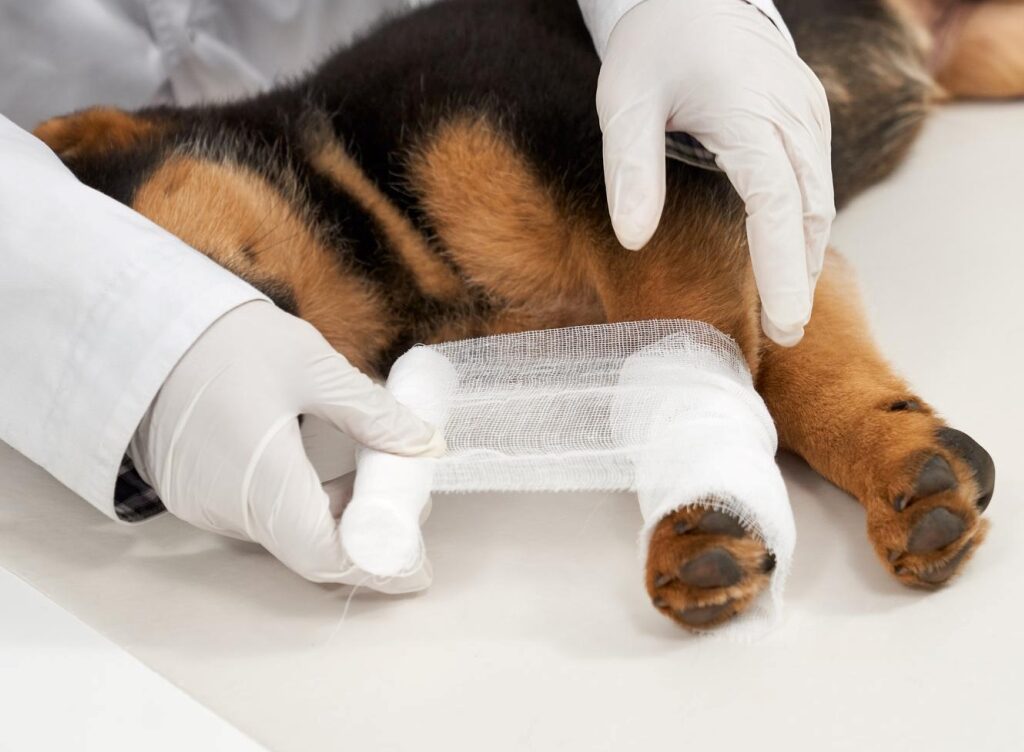
How to Build the Perfect Pet First-Aid Kit
Having a well-stocked pet first-aid kit can be a lifesaver in an emergency. Whether you have a dog, cat, or another furry companion, being prepared for minor injuries, allergic reactions, or unexpected illnesses can make all the difference before professional veterinary care is available. Here’s how to build the perfect pet first-aid kit.
Essential Items for a Pet First-Aid Kit
- Basic First-Aid Supplies
- Sterile gauze pads and bandages
- Non-stick bandages and medical tape
- Cotton balls and swabs
- Blunt-tipped scissors for cutting bandages
- Tweezers for removing splinters or ticks
- Digital thermometer (rectal use recommended for accuracy)
- Antiseptic and Wound Care
- Antiseptic wipes or solution (chlorhexidine or iodine-based)
- Hydrogen peroxide (for wound cleaning, but consult a vet before use)
- Saline solution for flushing out eyes or wounds
- Styptic powder or cornstarch (to stop minor bleeding)
- Antibiotic ointment (pet-safe options only)
- Medications and Treatments
- Activated charcoal (for poisoning emergencies—only use under veterinary guidance)
- Antihistamines (such as Benadryl, but check dosage with a vet first)
- Hydrogen peroxide (to induce vomiting in poisoning cases—only use under veterinary instruction)
- Anti-diarrheal medication (pet-specific brands recommended)
- Electrolyte powder for dehydration
- Flea and tick prevention treatment
- Tools and Equipment
- Muzzle (even the friendliest pets may bite when in pain)
- Leash and collar (to secure a frightened or injured pet)
- Emergency blanket (for warmth and shock prevention)
- Flashlight (for nighttime emergencies or checking wounds)
- Disposable gloves (to maintain hygiene while handling wounds)
- Emergency Contact Information
- Your veterinarian’s contact information
- 24-hour emergency pet hospital details
- Pet poison control hotline number (such as the ASPCA Poison Control Center)
- A written list of your pet’s medical history, allergies, and current medications
- Comfort and Miscellaneous Items
- Treats or calming chews to soothe a nervous pet
- A soft towel or cloth for handling injured pets
- Small plastic bags for waste disposal
- Extra collar ID tags in case of emergency
How to Store and Maintain Your Pet First-Aid Kit
- Keep your first-aid kit in a waterproof, easily accessible container.
- Store it in a designated place at home and have a travel-sized version for road trips or hikes.
- Check the kit regularly and replace expired medications or used items.
- Familiarize yourself with how to use each item—taking a pet first-aid class can be beneficial.
When to Seek Veterinary Assistance
While a first-aid kit is useful for minor injuries and stabilizing a pet before reaching a vet, it is not a substitute for professional care. Contact a vet immediately if your pet experiences:
- Difficulty breathing
- Uncontrolled bleeding
- Severe trauma (broken bones, deep wounds, etc.)
- Seizures or sudden collapse
- Poisoning or ingestion of a toxic substance
Final Thoughts
A well-prepared pet first-aid kit can provide peace of mind and crucial help in emergencies. By assembling and maintaining a complete kit, you can ensure your pet’s safety and well-being in times of need. Being proactive about pet safety can make all the difference when quick action is required.
